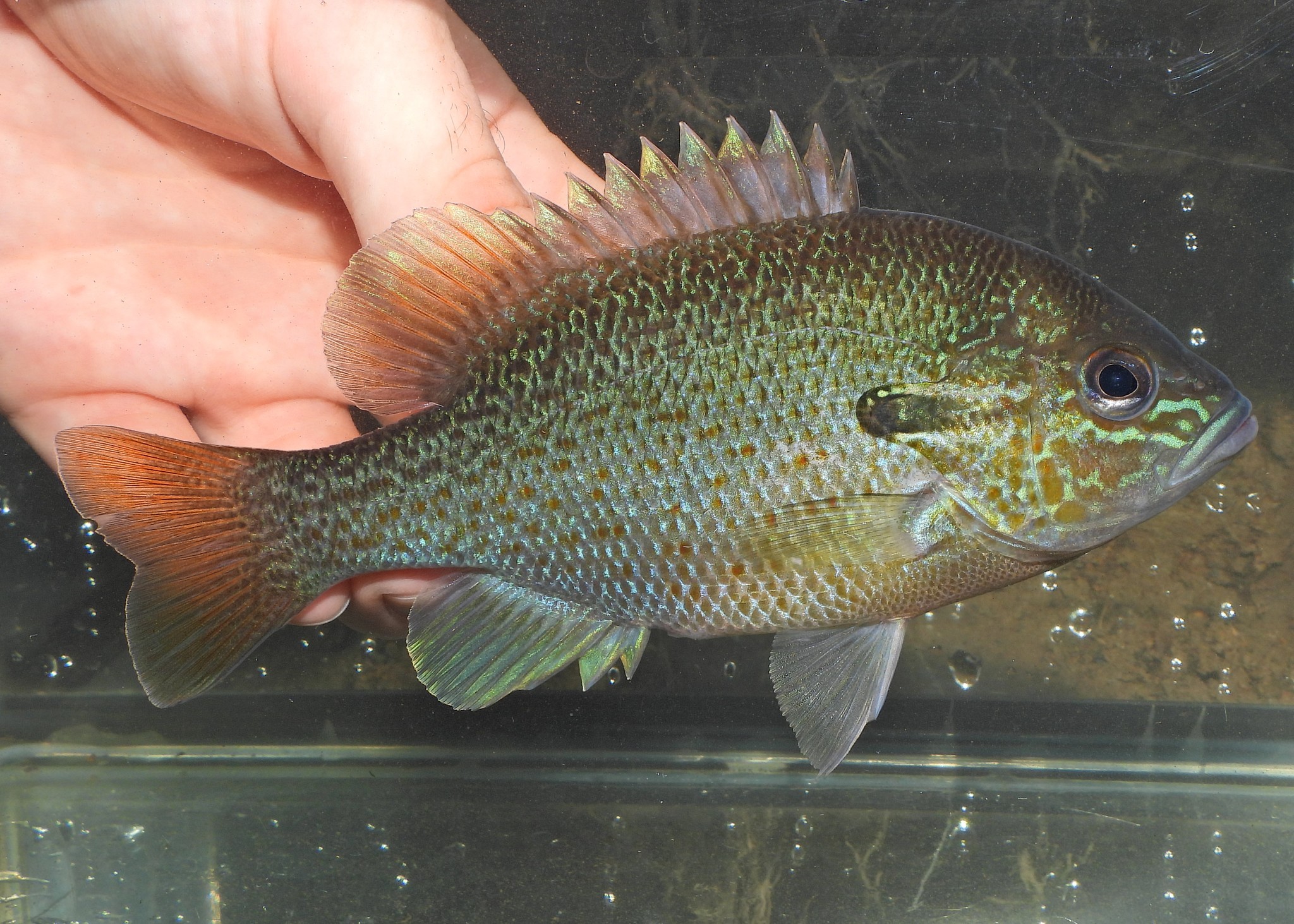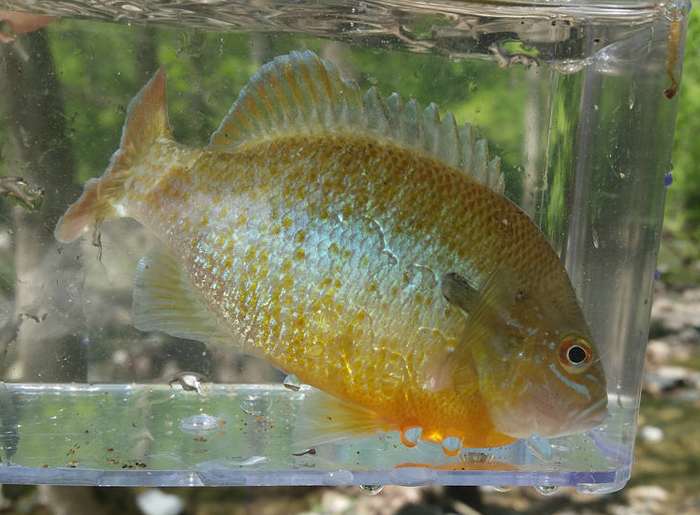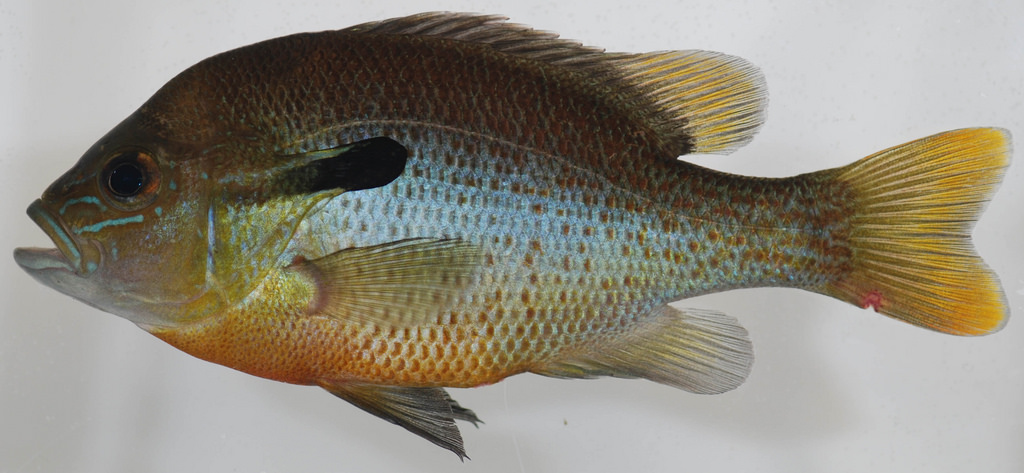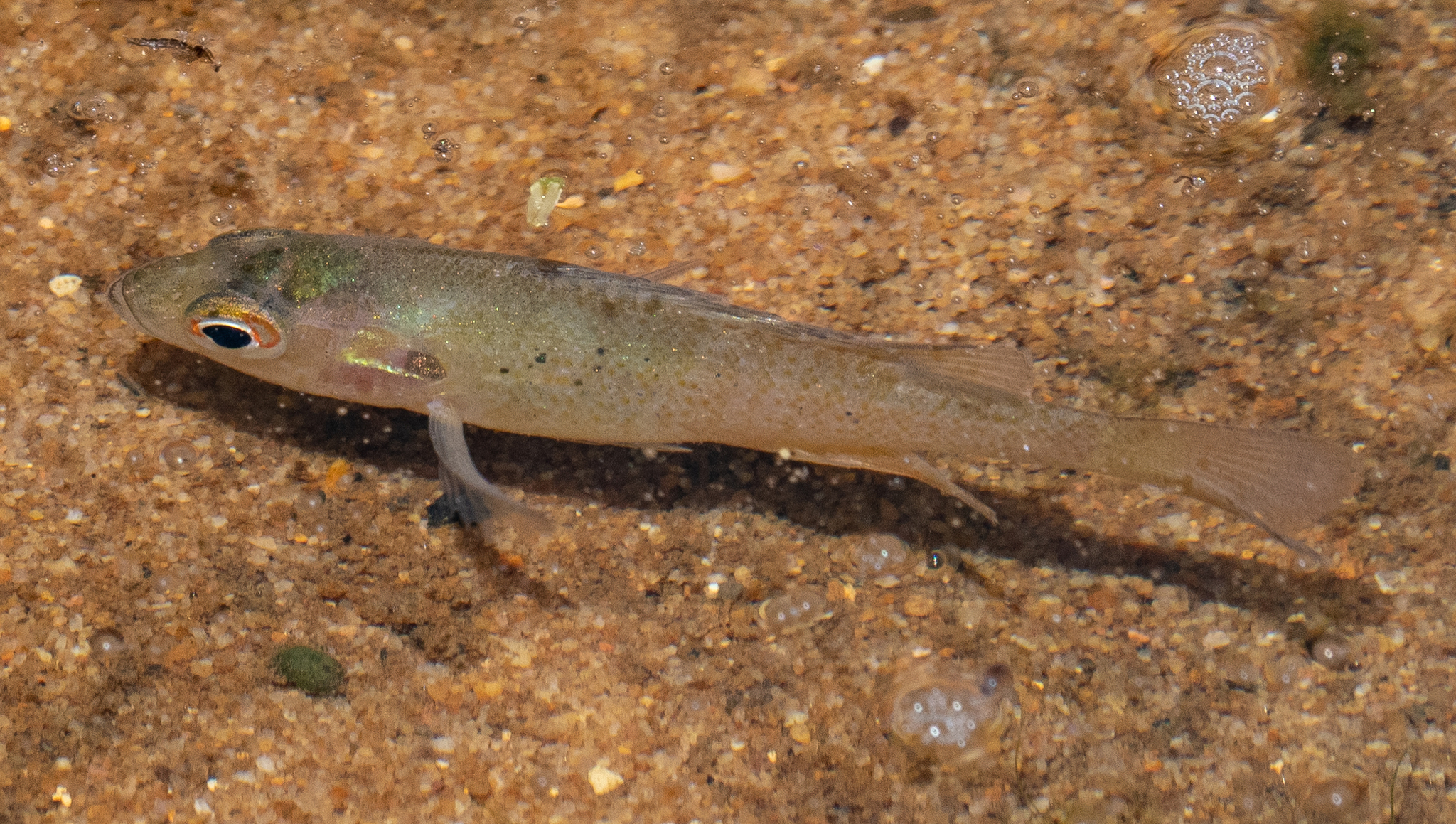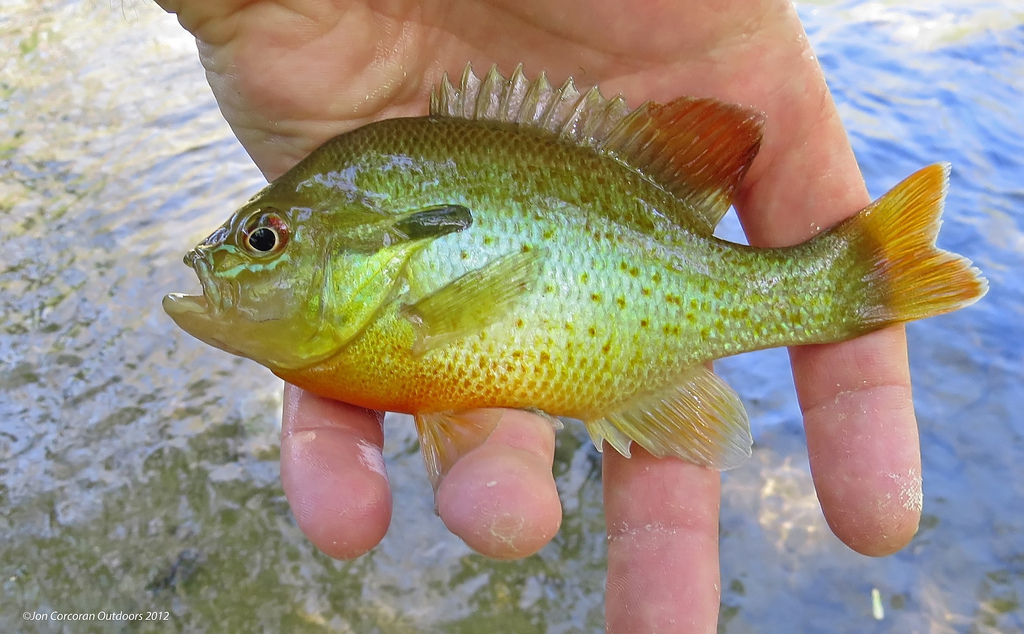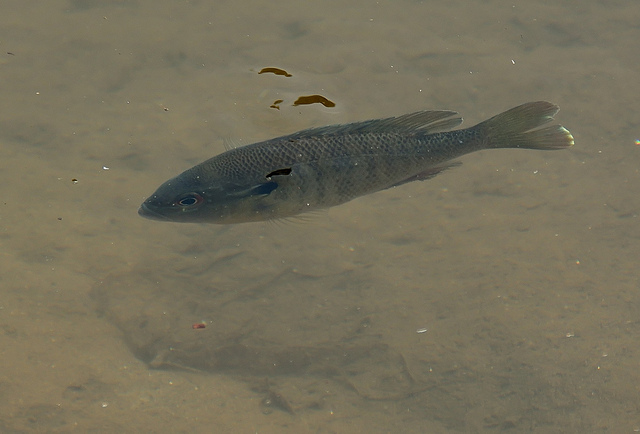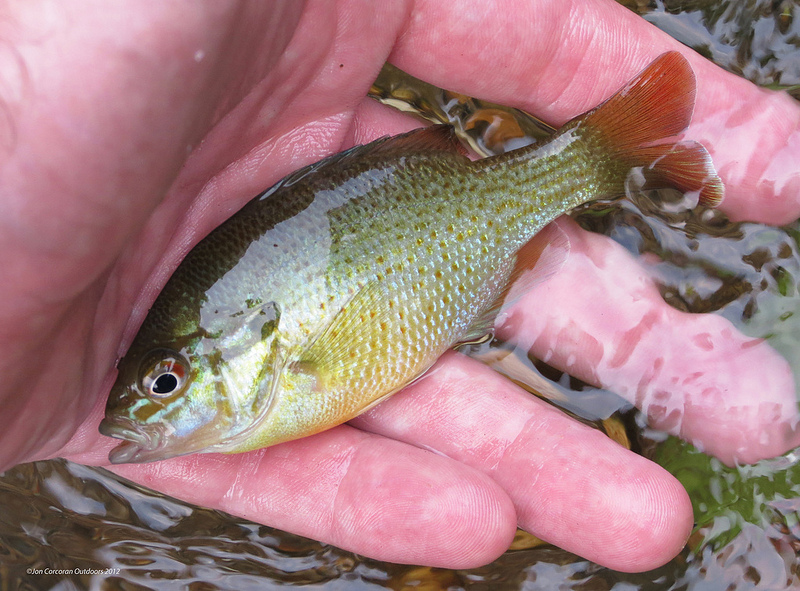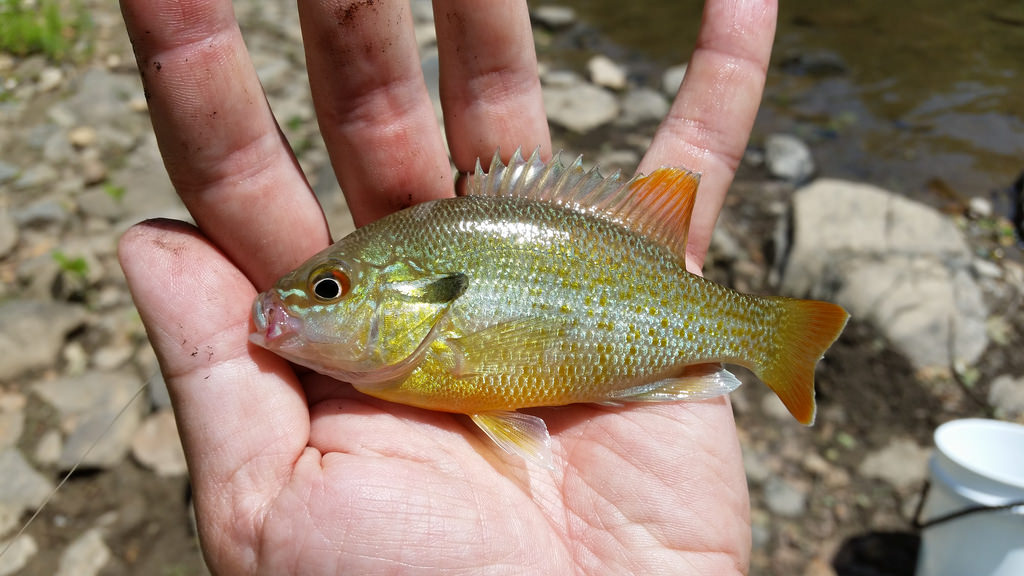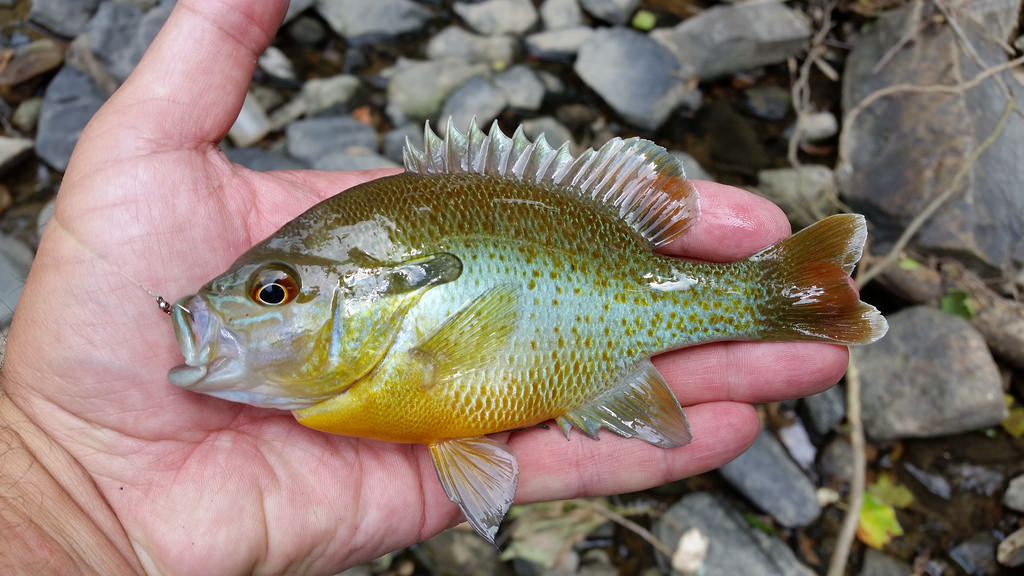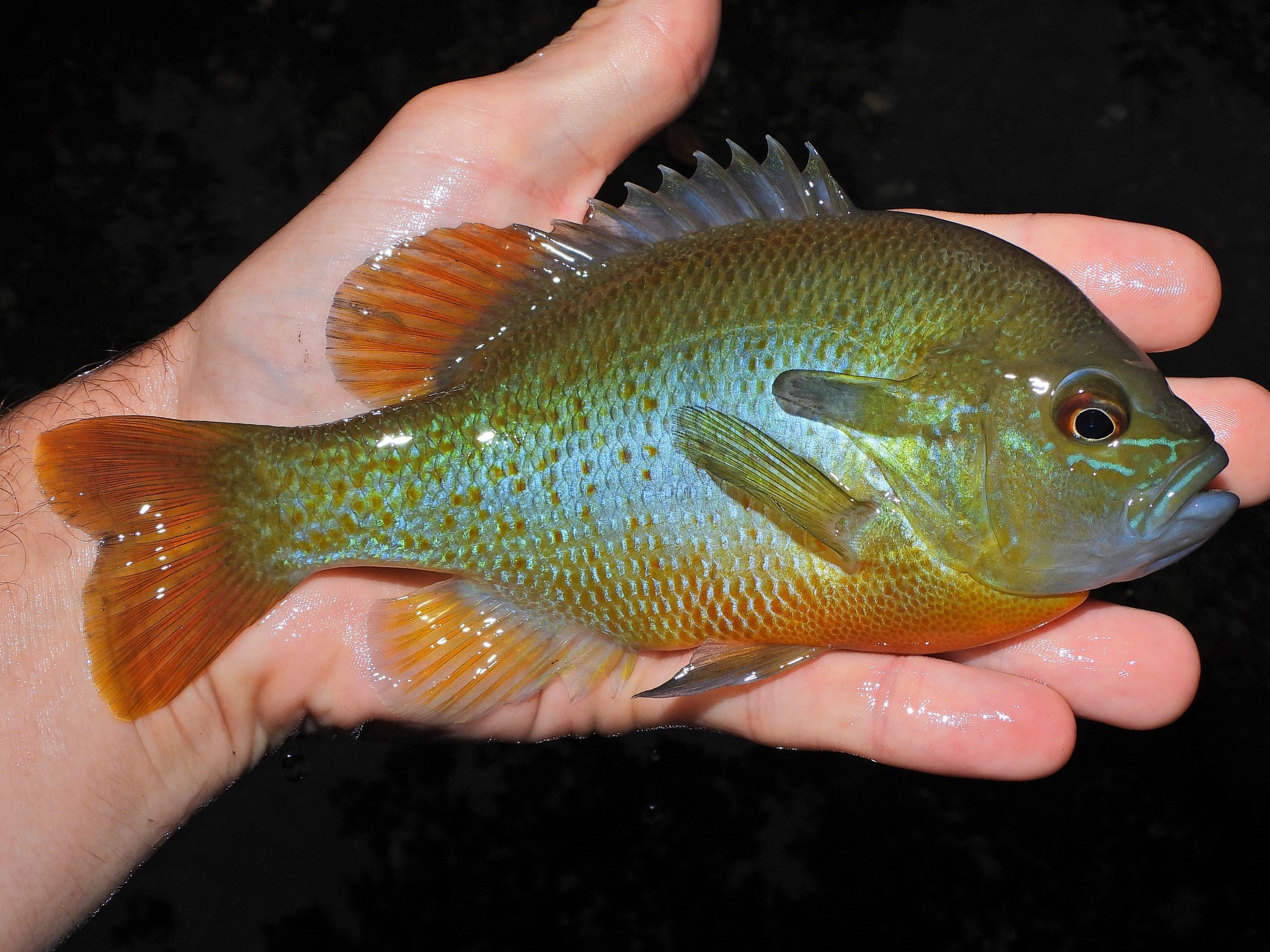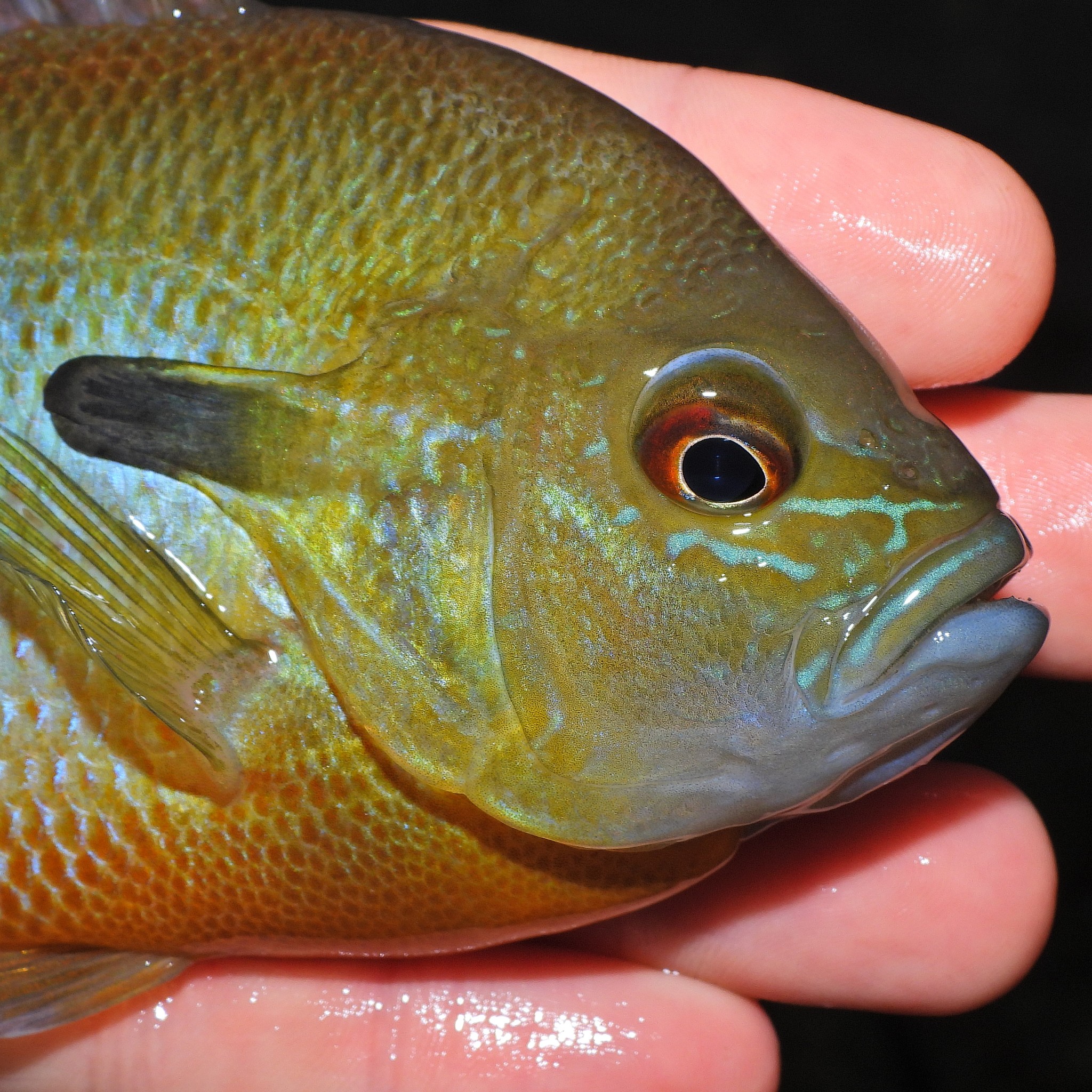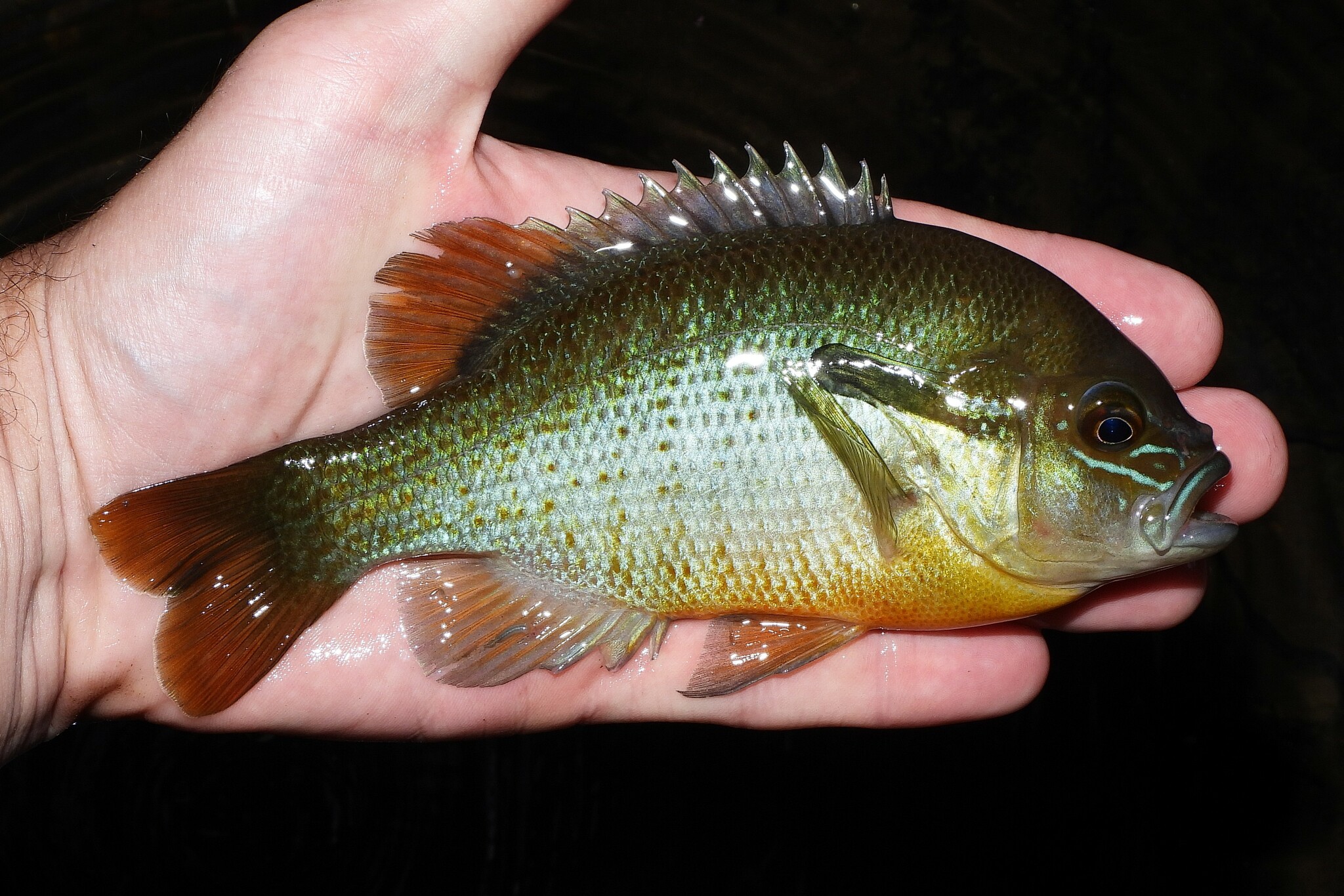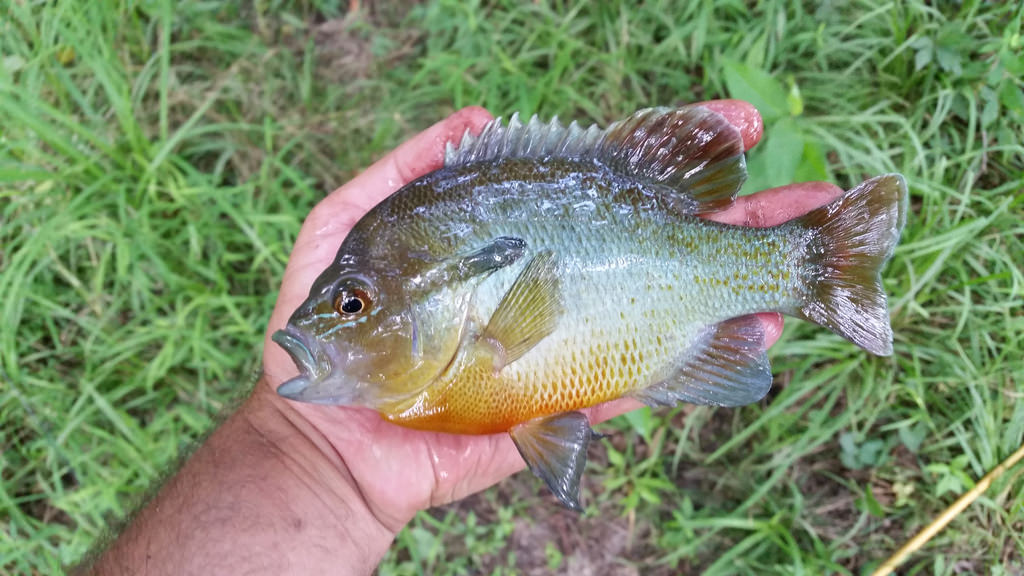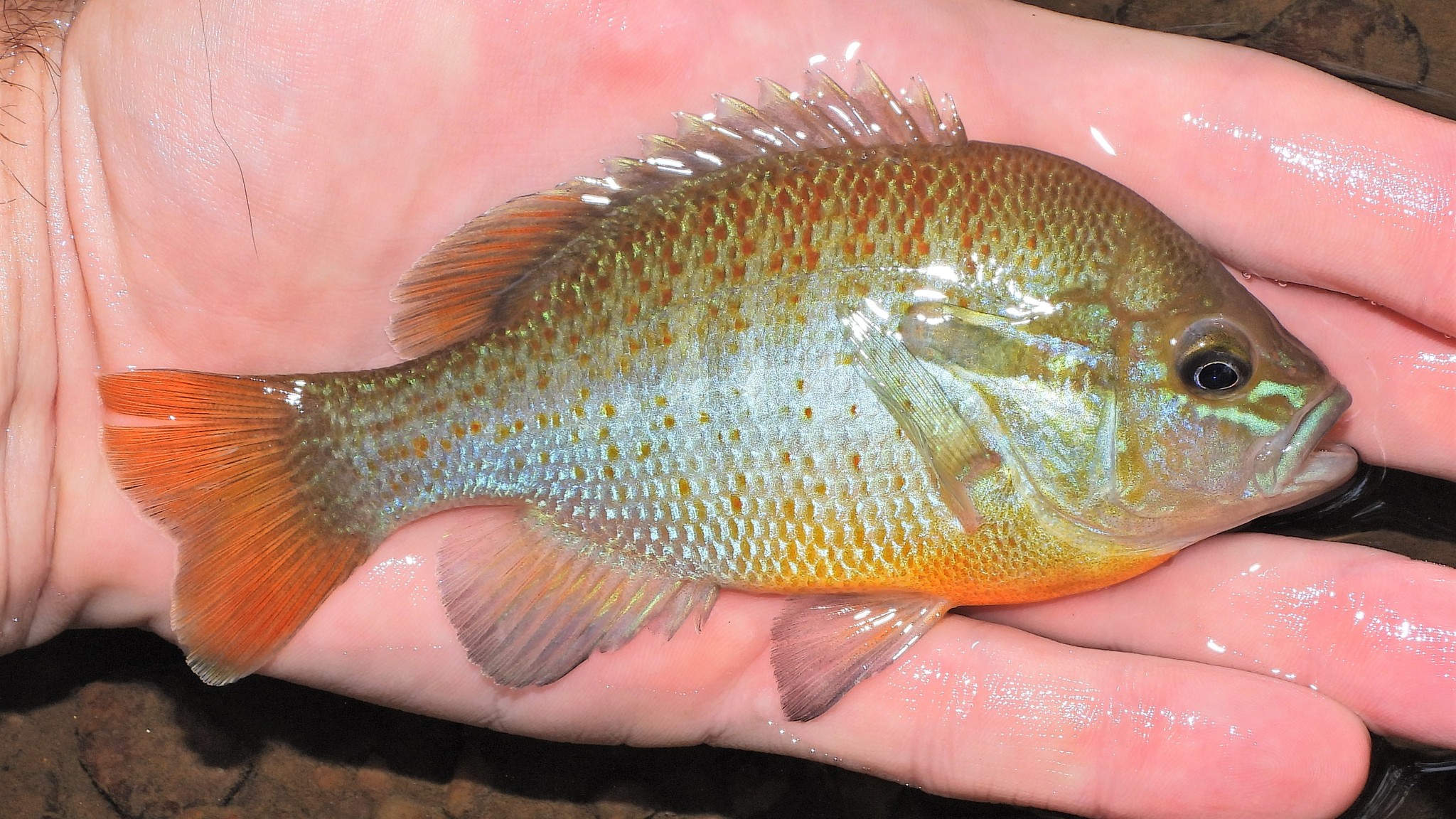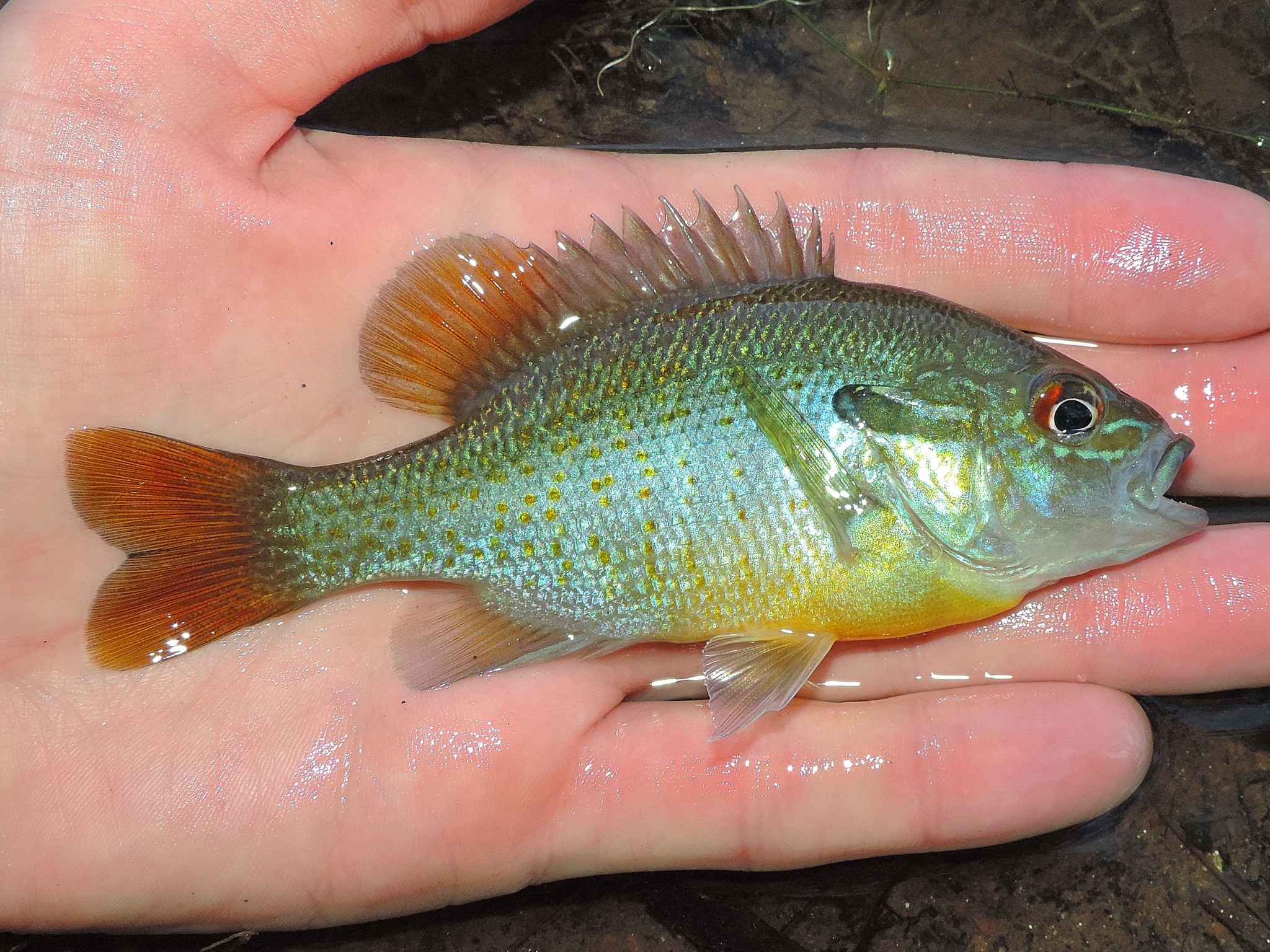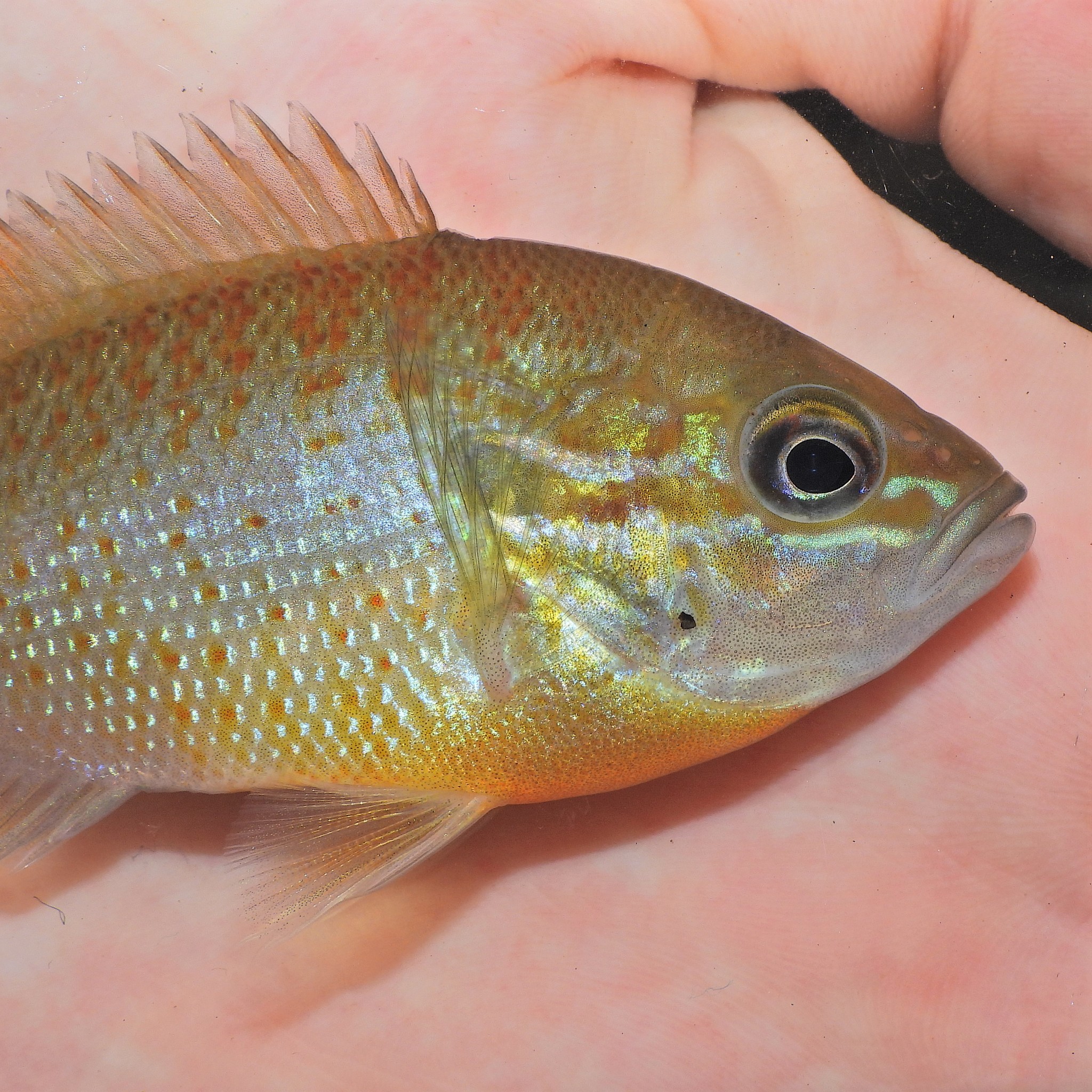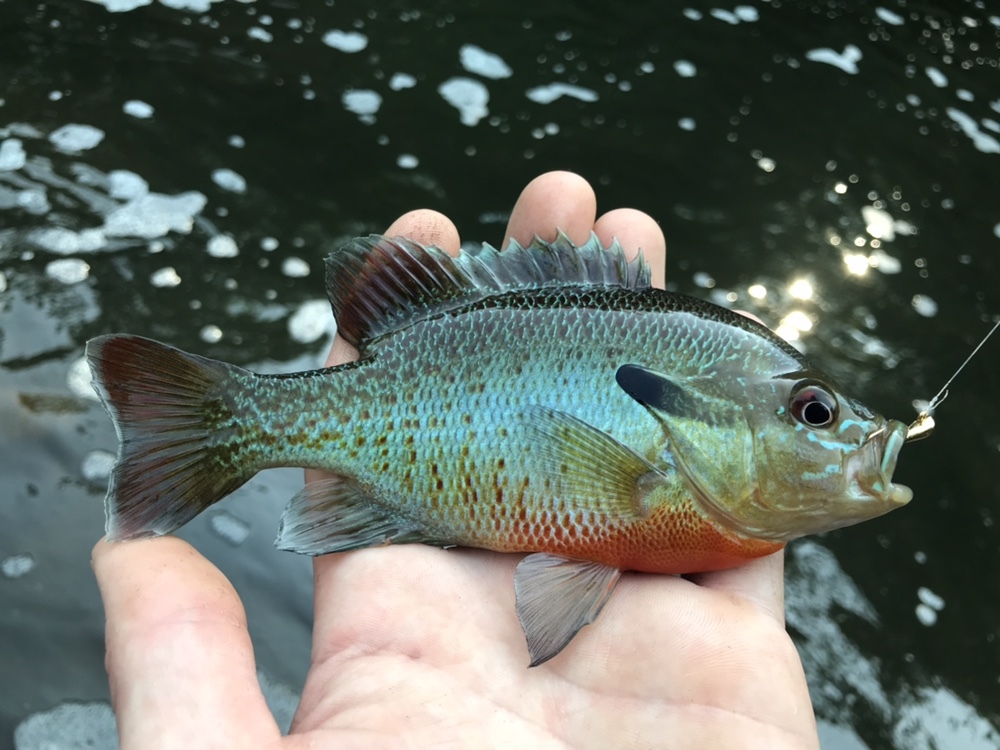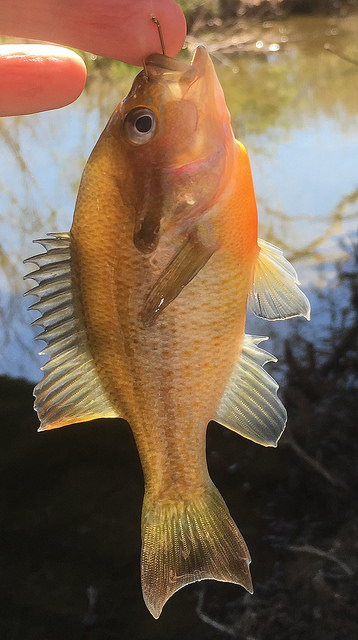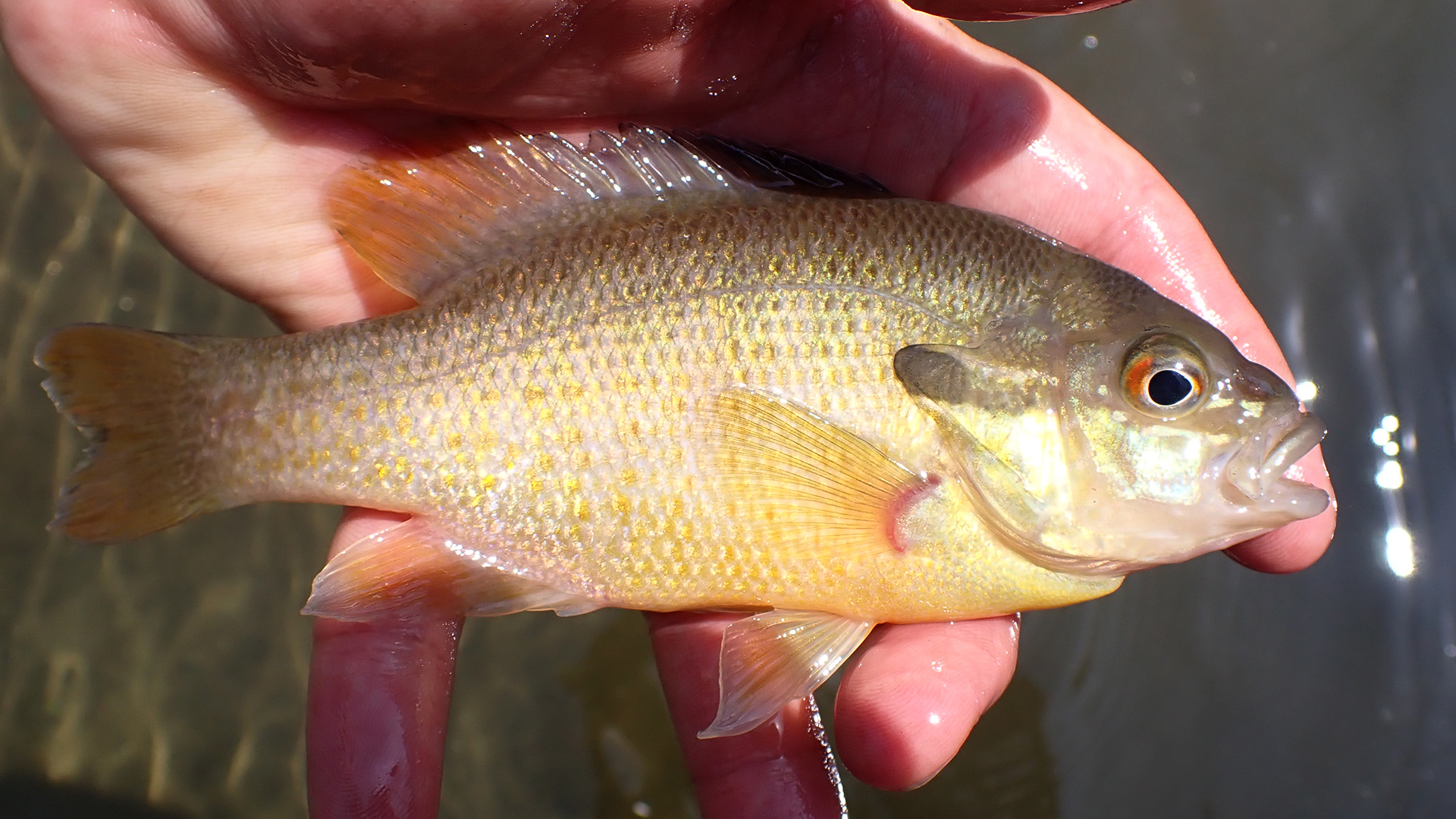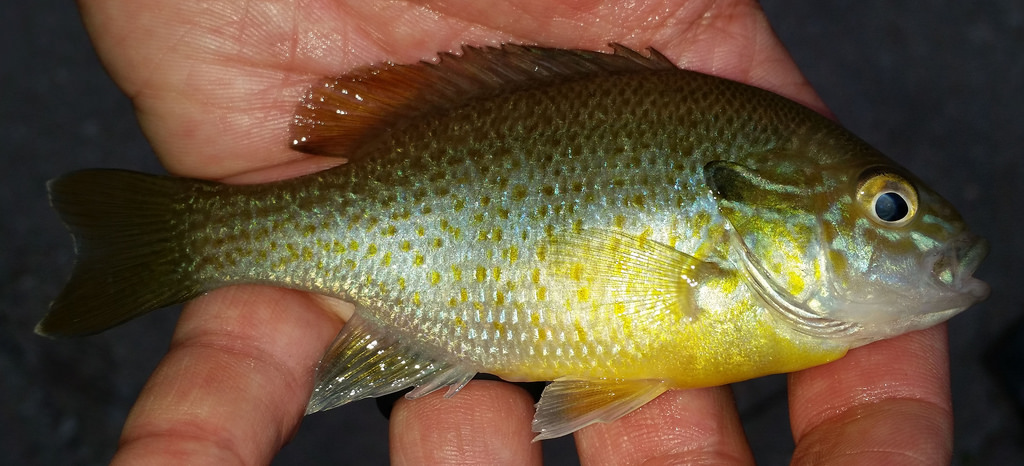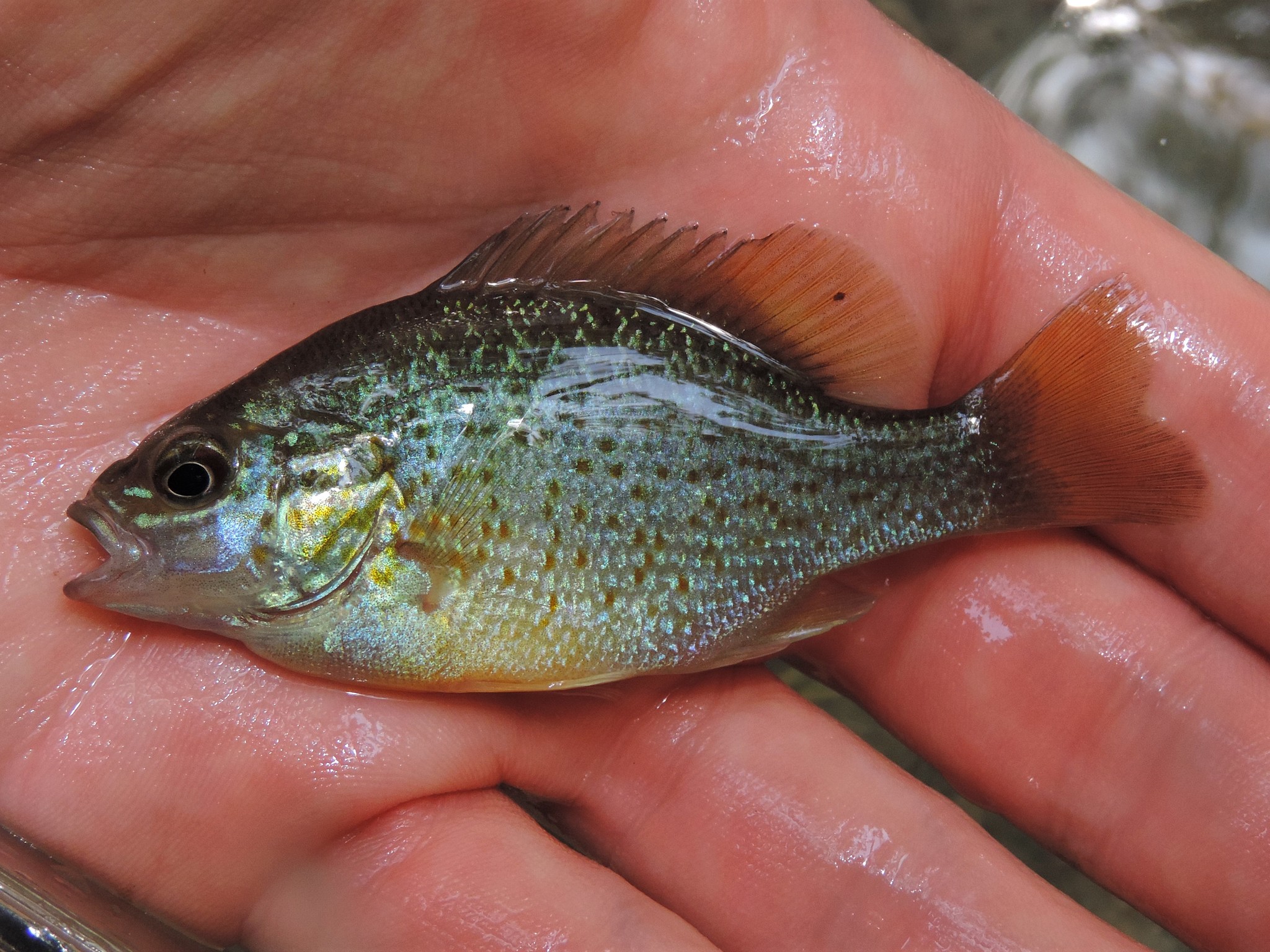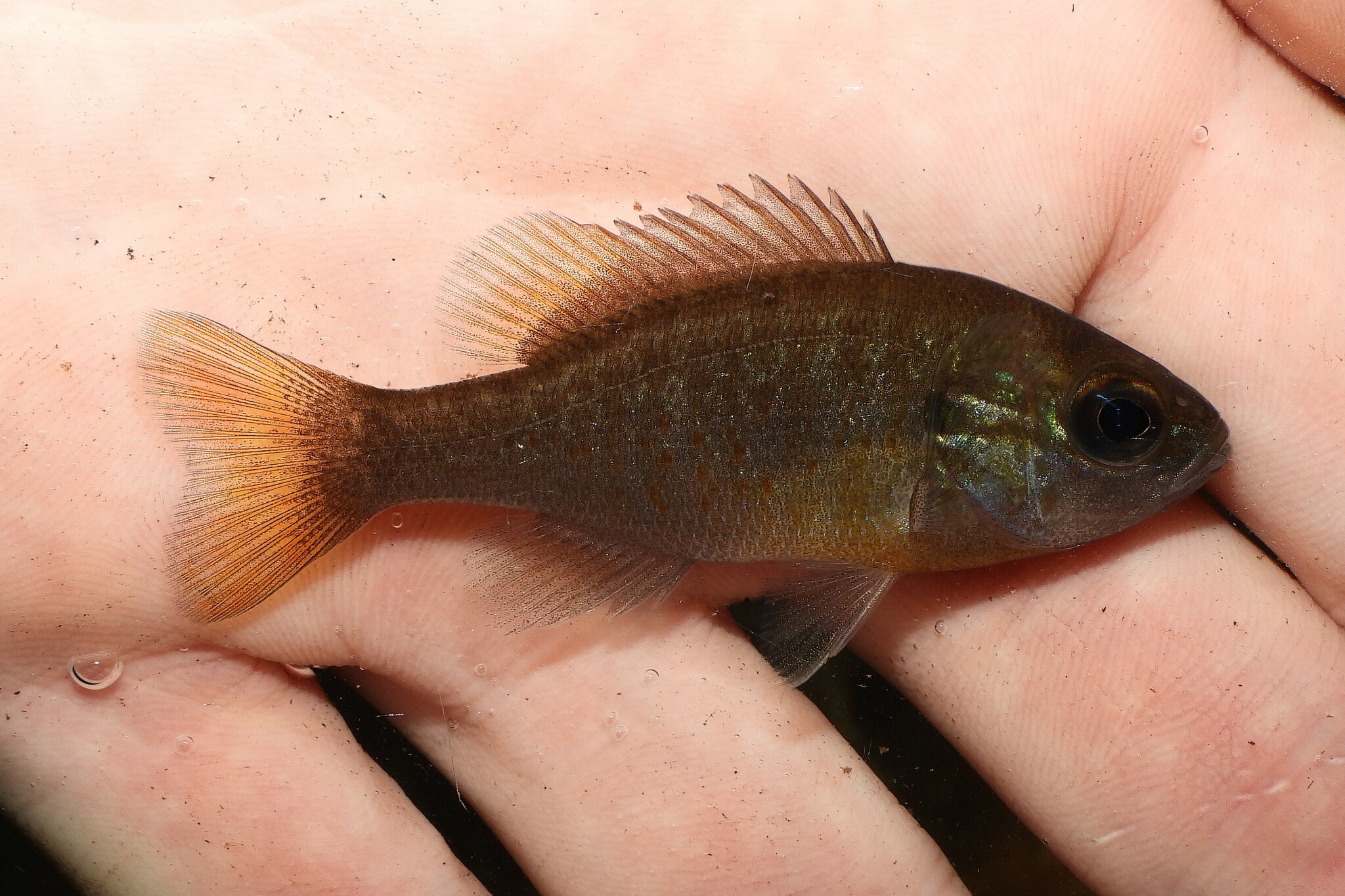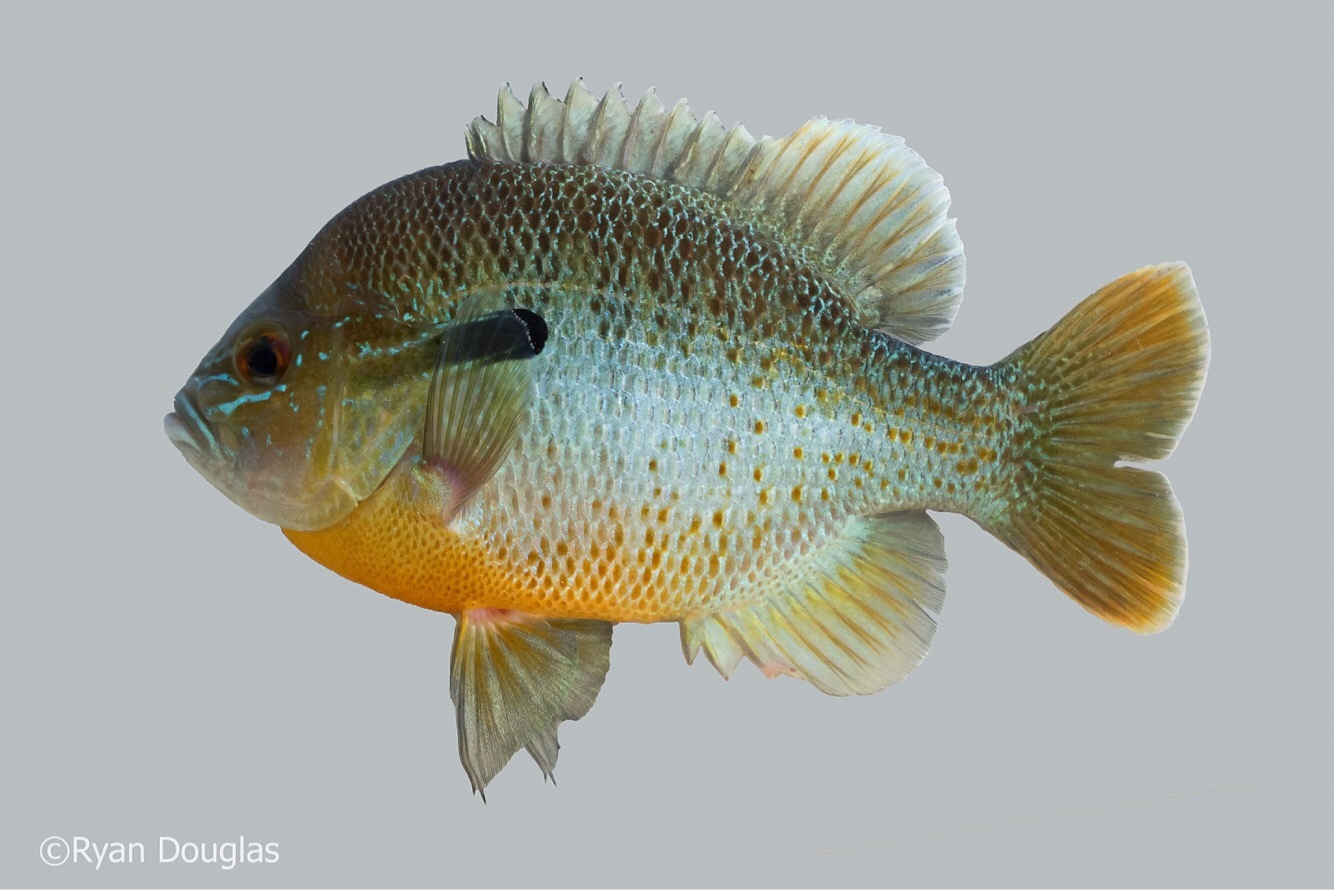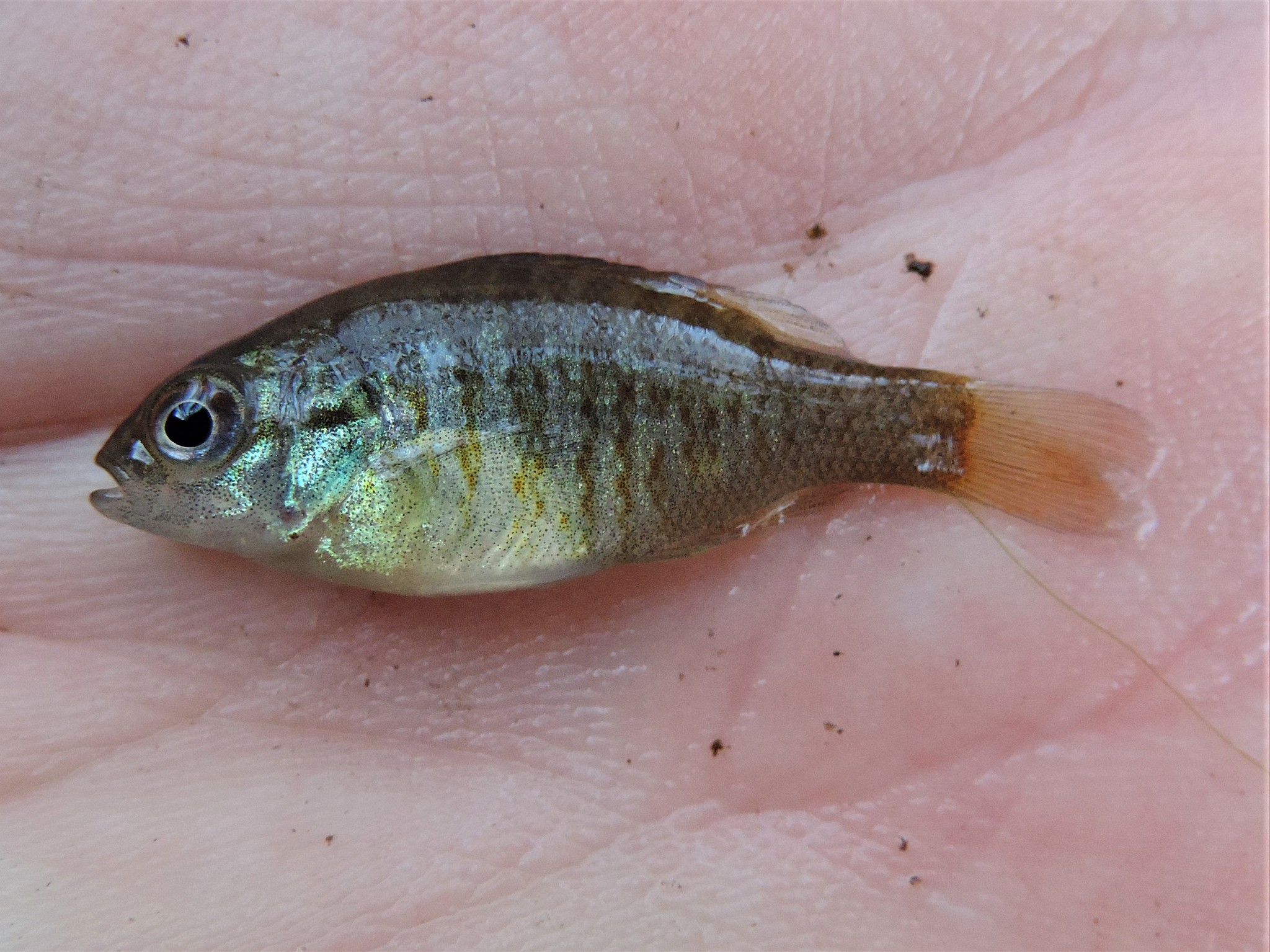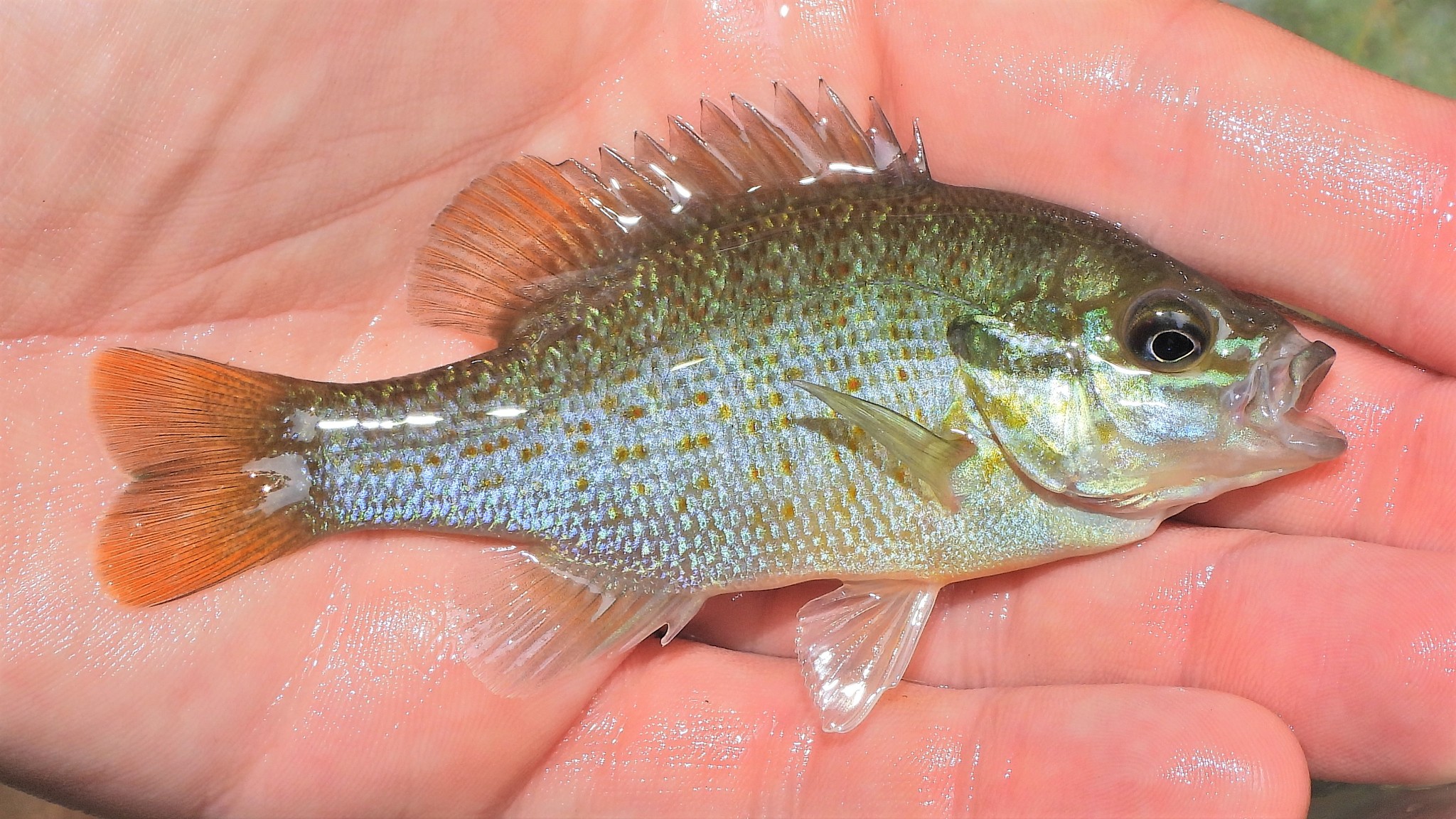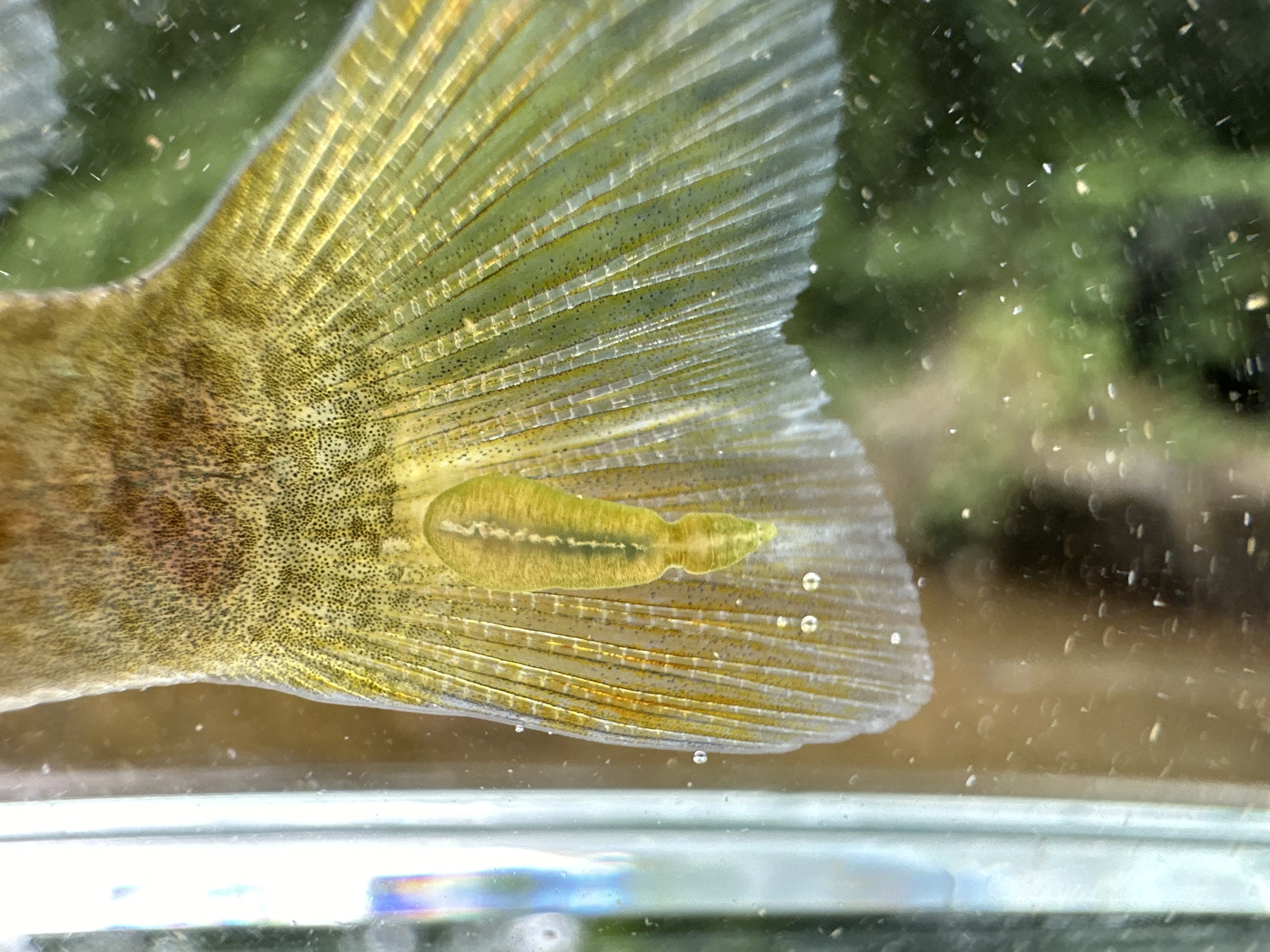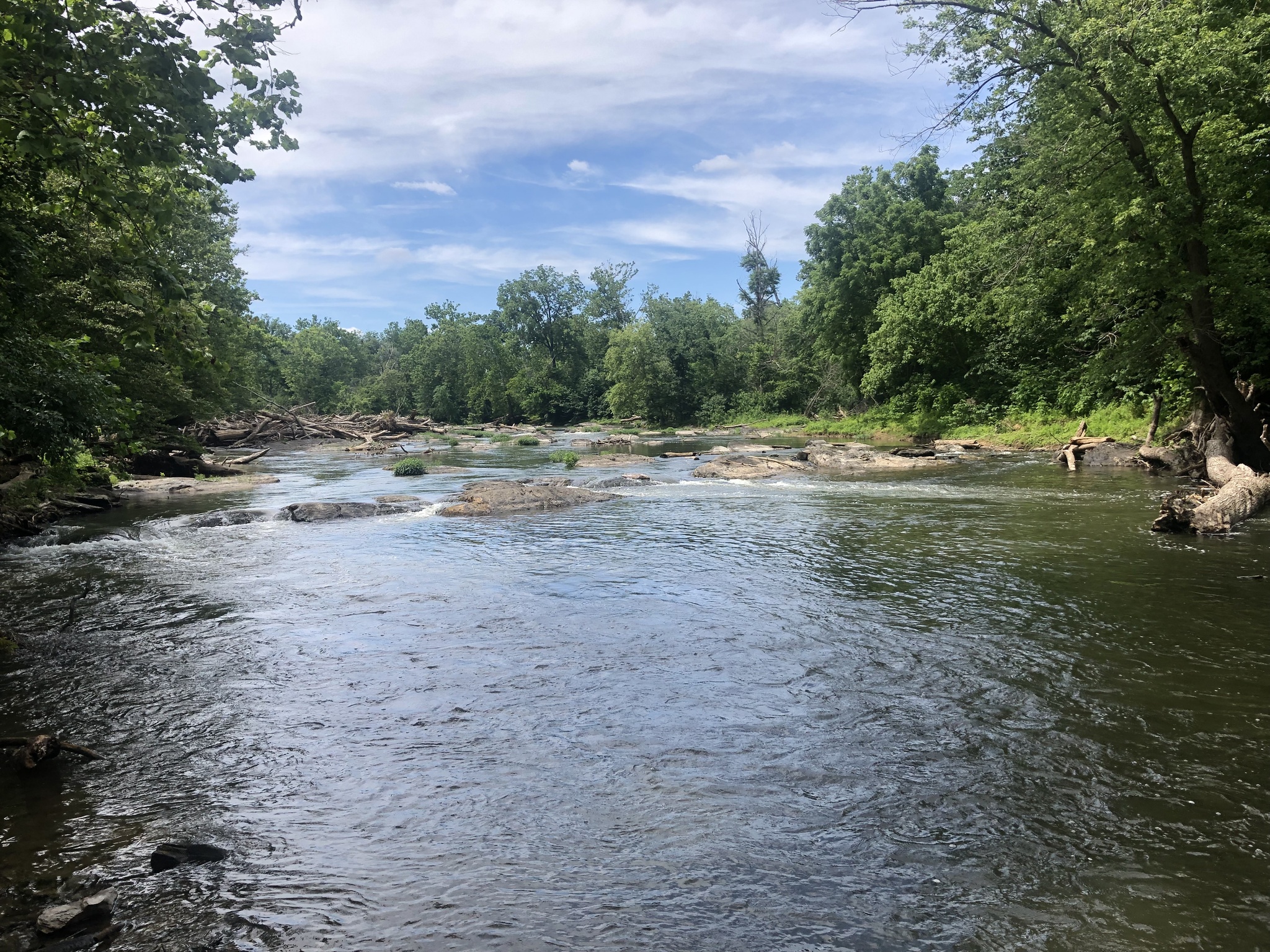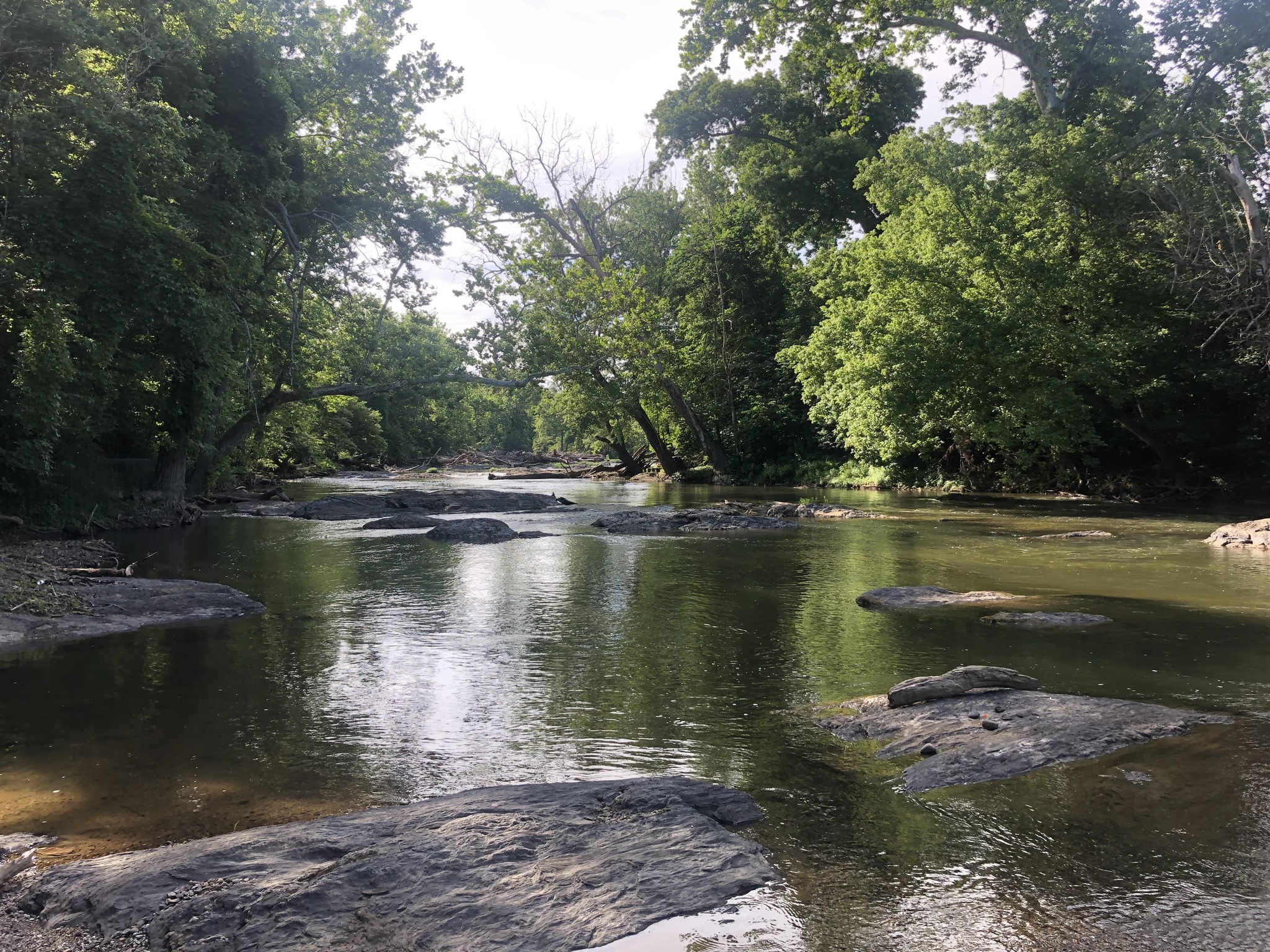Map Snapshot






















664 Records
Seasonality Snapshot
Source: Wikipedia
This article includes a list of general references, but it lacks sufficient corresponding inline citations. (May 2020) |
| Redbreast sunfish | |
|---|---|

| |
| Scientific classification | |
| Domain: | Eukaryota |
| Kingdom: | Animalia |
| Phylum: | Chordata |
| Class: | Actinopterygii |
| Order: | Centrarchiformes |
| Family: | Centrarchidae |
| Genus: | Lepomis |
| Species: | L. auritus
|
| Binomial name | |
| Lepomis auritus | |
| Synonyms[2] | |
| |
The redbreast sunfish (Lepomis auritus) is a species of freshwater fish in the sunfish family (family Centrarchidae) of the order Perciformes. The type species of its genus, it is native to the river systems of eastern Canada and the United States. The redbreast sunfish reaches a maximum recorded length of about 30 centimetres (12 in).
The species prefers vegetated and rocky pools and lake margins for its habitat. Its diet can include insects, snails, and other small invertebrates. A panfish popular with anglers, the redbreast sunfish is also kept as an aquarium fish by hobbyists. Redbreast sunfish are usually caught with live bait such as nightcrawlers, crickets, grasshoppers, waxworms, or mealworms. They can also be caught using small lures or flies. Most anglers use light spinning tackle to catch redbreast sunfish. It is popular with fly anglers in the winter because it will more readily strike a moving fly than will bluegills in cooler water.
As is typical for the sunfishes, the female redbreast sunfish lays her eggs (about 1000) in a substrate depression built by the male.[2] The male guards the eggs and fry.
The specific epithet, auritus, is Latin for big-eared.

Description
[edit]

The average length of the redbreast sunfish is around 11 centimetres (4 in) with a record 30.5 centimetres (12.0 in). The record weight for the fish is 0.79 kilograms (1.7 lb). The redbreast sunfish is characterized by a long black opercular flap, which is longer than those of most other sunfish in its range.[3] There are a few blue iridescent vermiculations on the head. Small teeth may be appreciated, mostly on the roof of the mouth.[3][4] There are faint vertical bars present on the olive-green bodies of both sexes, which may become more apparent as the background coloration changes to blue-green near the lateral line.[3][5] Males have darker ventral coloration than that of females, ranging from orange-yellow to orange-red.[3] The caudal fin has a shallow fork and may have orange to red pigmentation.[3] It is common within the redbreast sunfish's native and introduced range for hybridization with other sunfish species to occur.[6]
Distribution
[edit]The species' native range is in the eastern United States and Canada, in rivers emptying into the Atlantic Ocean. The redbreast sunfish tends to be more of a cool-river species, but also inhabits freshwater lakes and streams. The species has been introduced as far west as Louisiana and West Texas.[6] Lepomis auritus has been transplanted to and become established in Germany, Italy,[7] Mexico,[8] and Puerto Rico.[6] The effects of introduced populations of redbreast sunfish on native species are not well studied.[6]
Ecology
[edit]Redbreast sunfish mainly consume immature aquatic insects. Mayflies, small fish, and dragonfly larvae consist of the majority of the sunfish's diet based on stomach content. Small crayfish may also be consumed. Being an opportunistic feeder, the fish competes with other sunfish and larger predatory fish that prey on the same food they do.
Larger piscivorous fish are the main predators of smaller redbreast sunfish. Micropterus species are a major threat to sunfish because of their shared habitat and the availability of the sunfish. The sunfish prefers structures around banks and overhanging branches that provide food, shade, and protection. Lepomis auritus survives best in water with a current and a pH between 7.0 and 7.5.[2] Lack of current, overly acidic, or basic water can dramatically affect the sunfish's survival rate.
Human influence on abiotic factors, such as sunlight, and biotic factors, such as predator numbers, can have a major influence on sunfish. Clearing debris from the bank can increase the amount of sunlight that reaches the water, thus increasing water temperature, while also decreasing the number of hiding places along the bank that sunfish can use. Decreasing the number of larger predatory fish by harvesting them will increase the survival rate of the redbreast sunfish.
Life history
[edit]The redbreast sunfish is a spring spawner on sand-gravel substrate, depending on location or when water temperature reaches 16–26 °C (61–79 °F). According to Stanley Sharp, "The mature male generally builds a nest in shallow water or may simply use the abandoned nest of another Centrarchid. The female eventually enters the nest, releases her adhesive eggs for fertilization while swimming with the male, and then leaves. The male remains to guard and fan the eggs, and possibly even to guard the young for a brief period. The male and female will then move out of the shallow water after spawning and into deeper water. A male sunfish will breed with more than one female, just as a female sunfish will breed with more than one male. Average egg production for the sunfish is around 3000, depending on the age of the female.[9] Mature ova are around 2.1 millimetres (0.083 in) in diameter.[9] Reproductive maturity is reached in the second year of life. They have been known to have a maximum lifespan of around eight years.[3] Currently, humans do not play a large role in influencing life history due to large populations and secluded areas.
Relationship with humans
[edit]Management
[edit]Currently, the redbreast sunfish is not on the federal or state endangered or threatened species list. The species is thriving in its natural habitat.
Angling
[edit]The IGFA all tackle world record for the species stands at 0.79 kilograms (1 lb 12 oz) caught from the Suwannee River in Florida in 1984.[10] A Georgia state record fish caught in the Satilla River in May 2022 tied the world record.[10][11] A North Carolina state record fish caught on the Lumber River in 2019 weighed 2 pounds 1 ounce (0.94 kg).[12]
References
[edit]- ^ NatureServe (2013). "Lepomis auritus". IUCN Red List of Threatened Species. 2013: e.T184095A18235291. doi:10.2305/IUCN.UK.2013-1.RLTS.T184095A18235291.en. Retrieved 19 November 2021.
- ^ a b c Froese, Rainer; Pauly, Daniel (eds.). "Lepomis auritus". FishBase. July 2022 version.
- ^ a b c d e f "Redbreast sunfish (Lepomis auritus) - Native". South Carolina Department of Natural Resources. 2015. Retrieved 24 July 2022.
- ^ Hubbs, Clark; Edwards, Robert J.; Garrett, Gary P. (1991). "An Annotated Checklist of the Freshwater Fishes of Texas, with Keys to Identification of Species". Texas Journal of Science Supplement. 43 (4): 38–39. Retrieved 25 July 2022.
- ^ Jacobs, R.P.; O'Donnell, E.B.; Connecticut DEEP (2022). "Redbreast sunfish (Lepomis auritus) - Native, Excerpt from "A Pictorial Guide to Freshwater Fishes of Connecticut"". Connecticut Department of Energy and Environmental Protection. Retrieved 24 July 2022.
- ^ a b c d Fuller, Pam; Cannister, Matt (27 June 2019). "Lepomis auritus (Linnaeus, 1758)". U.S. Geological Survey Nonindigenous Aquatic Species. Retrieved 24 July 2022.
- ^ Zogaris, S. (2017). "Information on measures and related costs in relation to species considered for inclusion on the Union list: Lepomis spp" (PDF). Technical note prepared by IUCN for the European Commission. Retrieved 24 July 2022.
- ^ "Lepomis auritus (Linnaeus, 1758)". Integrated Taxonomic Information System. U.S. Geological Survey & The Smithsonian Institution. Retrieved 24 July 2022.
- ^ a b Alsip, P. (10 August 2017). "Lepomis auritus (Linnaeus, 1758)". U.S. Geological Survey, Nonindigenous Aquatic Species Database, Gainesville, FL, and NOAA Great Lakes Aquatic Nonindigenous Species Information System, Ann Arbor, MI. Retrieved 24 July 2022.
- ^ a b "Sunfish, redbreast". igfa.org. IGFA. Retrieved 25 July 2022.
- ^ "New record redbreast caught on Satilla River in Georgia". The Albany Herald, Georgia. 14 May 2022. Retrieved 24 July 2022.
- ^ The Associated Press (1 July 2019). "North Carolina's freshwater fish record falls after 36 years". WJHL Channel 11. Retrieved 24 July 2022.
- FishBase: Lepomis auritus
- ITIS: Lepomis auritus
- Ellis, Jack (1993). The Sunfishes-A Fly Fishing Journey of Discovery. Bennington, VT: Abenaki Publishers, Inc. ISBN 0-936644-17-6.
- Rice, F. Philip (1964). America's Favorite Fishing-A Complete Guide to Angling for Panfish. New York: Harper Row.
- Rice, F. Philip (1984). Panfishing. New York: Stackpole Books. ISBN 0-943822-25-4.
- Malo, John (1981). Fly-Fishing for Panfish. Minneapolis, Minnesota: Dillon Press Inc. ISBN 0-87518-208-9.
- Cooke, Steven, and David P. Philipp. Centrarchid Fishes: Diversity, Biology, and Conservation. Chichester, U.K.: Wiley-Blackwell, 2009. Print.
- Dewoody, J. Andrew; Fletcher, Dean E.; Wilkins, S. David; Nelson, William S.; Avise, John C. (1998). "Molecular Genetic Dissection of Spawning, Parentage, and Reproductive Tactics in a Population of Redbreast Sunfish, Lepomis Auritus". Evolution. 52 (6): 1802–1810. doi:10.1111/j.1558-5646.1998.tb02257.x. PMID 28565334. S2CID 205780809.
- Nadig, Susan G. Evaluating Potential Alteration of Genetic Diversity in Populations of Redbreast Sunfish (Lepomis Auritus) Using RAPD ASSAY. Thesis. The University of Tennessee Knoxville, 1996. Print.
- Sharp, Stanley K. Serum Levels of 17B-Estradiol and Testosterone as Indicators of Environmental Stress in Redbreast Sunfish, Lepomis Auritus. Thesis. The University of Tennessee, Knoxville, 1994. Print.
- Shepard, Kenneth L. Use of Standard Metabolic Rate as an Indicator of Environmental Stress in Redbreast Sunfish, Lepomis Auritus. Thesis. The University of Tennessee Knoxville, 1988. Print.
